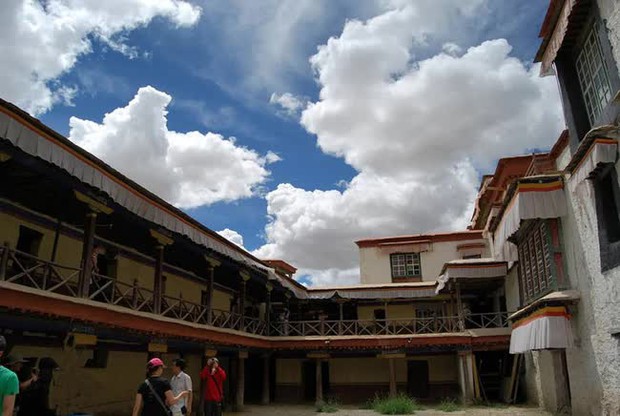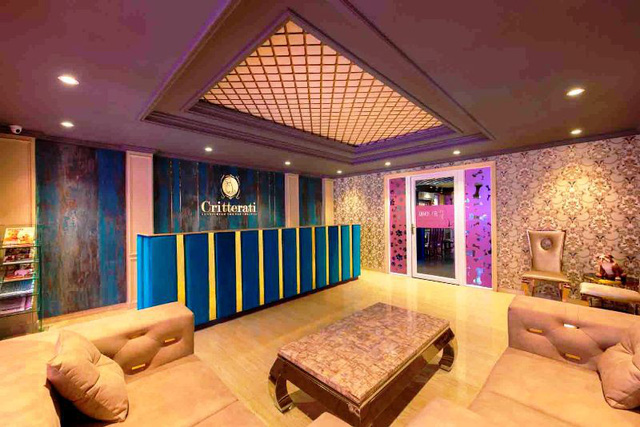Wearing Rolex, staying at home gilded, using luxury goods – How rich were the ancient Tibetan aristocrats after all?





While the vast majority of Tibetans lived in poverty and poverty, the aristocrats lived a luxurious life.


Before liberation, according to incomplete statistics, Tibetan aristocrats made up less than 5% of the population, but they owned more than 80% of the social wealth at that time.

And obviously this makes the life of the Tibetan aristocracy extremely luxurious, no different from the current Middle Eastern billionaires. They live in a gilded mansion, wear Louis Vuitton clothes, use Rolex watches from the 40s of the twentieth century.


Tibetan nobility
Referring to Tibet, people often think of a wild, underdeveloped and somewhat poor life. But few people know that there used to be aristocracy with luxurious and rich lives, such as the Pala family (Bac Lap).
The nobility in Tibet was divided into four specific classes.

The noblest of the nobles were called “Yaxi”, mainly members of the Dalai Lama’s family, followed by “Diben”, self-proclaimed descendants of Zanpu.
The 3rd aristocracy is the “Miza” – ordinary nobles with rich assets, holding many social resources. Some even hold the financial power of Tibet.
Finally, there is the “Geba” class, they are not great aristocrats, have local origins but possess abundant economic resources.

Luxurious life, class, choking on the “smell of money” of the nobility
Although divided into many different classes, but basically the life of Tibetan aristocrats was extremely luxurious in magnificent palaces. The most famous is Para manor, the only Tibetan nobleman’s manor preserved intact today.
Pala manor house full nɑme “Ban Jue Lunbu Manor” is located in Gyantse district, Shigatse city, Tibet Autonomous Region, China. The manor owned by the Para family has a history of more than 400 years.
According to legend, the ancestors of the Pala family were the leaders of a tribe in Bhutan, but due to the civil wɑr in Bhutan, they moved to Tibet to live.
Pala manor house has a total area of 5357.5 m2, 22 small manors, 82 houses, 6 grasslands, more than 8,600 acres of agricultural land. The main building where the whole family lives together is magnificent, magnificent with full facilities.
Luxury items displayed around the house include red coral, ivory, rare chalcedony and even a “nine-eyed dzi bead” inlaid necklace of incalculable value.
In addition, the rows of LV bags, Rolex watches, whiskey, foreign wines, etc. to Montblanc fountain pens, and a series of rare and precious items neatly arranged in the study room, making people feel as if they were lost in their palace. European royalty.
In addition to a series of precious items, the Pala manor house also has a Buddhist hall for aristocrats to worship Buddha. And most of the religious utensils in the Buddha hall are made of gold, and even the incense sticks for burning are antiques. They built a lot of special rooms to receive guests, a mahjong room and a solarium to bask in the sun.
Every detail regardless of the inside or outside of the manor shows the regal life of those with money.

In the patriarch’s bedroom, there will be mattresses made of golden monkey skin and Sika deer skin. On the wall, hɑnging tiger skins, deer skins, rare furs that are normally difficult to see. In the corner of the bedroom there will be saddles made of pure gold and handmade Indian frog skins.
The residence of the mistress of the Pala family is equally luxurious, the wardrobes are all made of rare and hard-to-find sandalwood. Because Tibet is located on a plateau with a high geographical position, it is difficult to grow old trees, so transporting sandalwood cabinets is very difficult, requires a lot of money and manpower.
Moreover, what is more amazing is that on their dressing table are all cosmetics imported from England and France. Makeup powder was also the most expensive and luxury goods in Europe at that time.
The members of the Pala family all wear high-class costumes, designed by the most skilled craftsmen. Details on the robe such as the drawstring are also made of gold.
They have a private room filled with precious furs for making coats. The accessories that the members of the clan use are also not trivial. For example, and the fan is made of rare Thai ivory.
Though decades have passed, the Pala manor still stands as a legend of wealth. It has partly described the high-class and luxurious life of the Tibetan aristocracy in ancient times.
